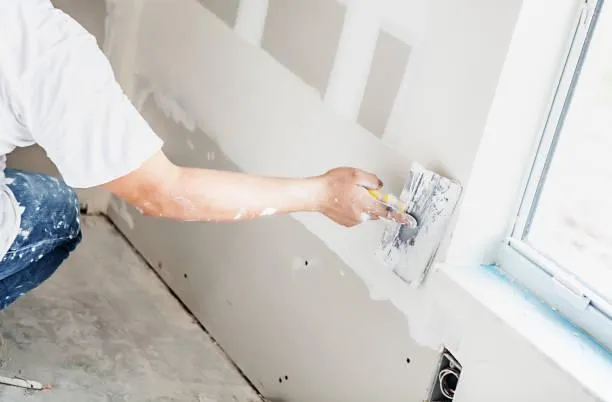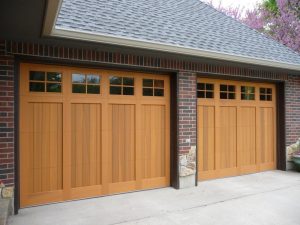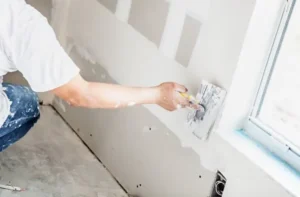Property managers and landlords face a constant balancing act between keeping units in excellent condition and controlling maintenance costs. One area that often requires attention is the drywall inside rental properties. From accidental damage caused by tenants to the natural wear and tear of daily living, drywall issues can range from small nail holes to large cracks or water damage. Knowing how to address these issues efficiently can save time, reduce costs, and keep your properties attractive to current and future tenants.
Understanding the Importance of Drywall in Rental Properties
Drywall plays a critical role in both the appearance and structural integrity of a property’s interior. It forms the smooth, paintable surface that defines the look of every room, while also contributing to insulation and soundproofing. For property managers and landlords, maintaining drywall in good condition is essential not just for aesthetics but also for protecting the value of the property.
Neglecting small issues can lead to bigger, more expensive repairs. For example, an unnoticed water stain could be an early sign of a leak that, left untreated, could lead to mold growth and extensive wall replacement.
Common Drywall Issues in Rental Properties
Rental units face a unique set of drywall challenges. Frequent tenant turnover often means more wear and tear. Nail and screw holes from hanging pictures, minor dents from furniture, and small cracks from temperature changes are common. In some cases, more severe damage like large holes, water infiltration, or mold growth may occur due to accidents or neglect.
Recognizing the difference between cosmetic damage and structural issues is key. Cosmetic flaws can often be repaired quickly and inexpensively, while structural or moisture-related problems require immediate attention from professionals.
Preventing Drywall Damage Before It Happens
Prevention is always more cost-effective than repair. Clear lease agreements outlining what tenants can and cannot do to walls can help limit unnecessary damage. Providing tenants with alternatives, such as adhesive hooks instead of nails, can also reduce the number of holes left behind.
Regular property inspections are another powerful tool for prevention. Checking for early signs of cracking, staining, or bubbling paint can catch drywall issues before they worsen. This proactive approach helps protect your investment and reduces emergency repair calls.
When to Handle Drywall Repairs Yourself
Small drywall repairs can often be handled by landlords or maintenance staff without calling in a contractor. Patching nail holes, smoothing minor dents, or repairing small cracks with joint compound are relatively simple tasks. Having the right tools and materials on hand—such as putty knives, spackle, and sanding blocks—can make these repairs quick and cost-effective.
However, it is essential to know your limits. Poorly executed drywall repairs can look unprofessional and may stand out to potential tenants during showings. If you are not confident in achieving a seamless finish, it may be better to hire a professional.
When to Call a Professional Drywall Contractor
More extensive drywall damage, such as large holes, sagging sections, or water-damaged walls, should be addressed by professionals. Professional drywall contractors have the skills, tools, and materials to make repairs that blend seamlessly with the existing wall. They can also assess underlying issues, such as leaks or poor ventilation, that may be causing repeated damage.
In addition, large-scale projects like replacing entire sections of drywall or repairing commercial units with multiple damaged walls are best handled by experts to ensure long-lasting results.
Drywall and Property Value
The condition of drywall has a direct impact on how potential tenants or buyers perceive a property. Walls that are clean, smooth, and freshly painted suggest that the property is well-maintained. Conversely, walls with visible patches, stains, or cracks can make a unit look neglected, even if the rest of the property is in good condition.
For landlords and property managers, investing in high-quality drywall repairs before listing a unit can pay off by attracting more tenants and potentially allowing for higher rental rates.
Drywall Painting and Finishing Tips
After repairing drywall, proper painting is critical for a professional finish. Priming patched areas before painting ensures even color and texture. Using high-quality paint not only improves the appearance but also makes walls more durable and easier to clean.
Neutral colors are a smart choice for rental properties because they appeal to a broad range of tenants and make touch-ups easier between occupancies. Keeping records of paint brands and colors used in each unit can also simplify future maintenance.
Addressing Water-Damaged Drywall
Water damage is one of the most serious threats to drywall. It can occur from plumbing leaks, roof problems, or flooding. When drywall becomes saturated, it loses its structural integrity and can harbor mold within 24 to 48 hours.
If you notice soft spots, swelling, or discoloration in drywall, it’s crucial to identify and fix the source of moisture immediately. In most cases, water-damaged drywall needs to be removed and replaced to prevent further damage and maintain a healthy living environment.
The Role of Professional Drywall Services in Long-Term Maintenance
For property managers overseeing multiple units, partnering with a reliable drywall service can streamline operations. Having a go-to contractor who understands your properties allows for faster turnaround times between tenants and ensures consistent quality of work.
This professional relationship can also help you budget more accurately for ongoing maintenance, as experienced contractors can provide guidance on expected repair costs over time.
Conclusion
For property managers and landlords, drywall maintenance is an essential part of protecting investment properties and keeping tenants satisfied. By combining preventive measures, timely repairs, and professional services when needed, you can keep walls in excellent condition and reduce long-term costs. Whether it’s patching a small hole or replacing entire sections, taking the right approach to drywall care ensures your properties remain attractive, safe, and profitable.
FAQs
Why is drywall maintenance important for landlords and property managers?
Maintaining drywall ensures that rental units remain attractive, safe, and structurally sound, which helps retain tenants and protect property value.
Can small drywall repairs be done without a professional?
Yes, minor issues like nail holes or small cracks can often be repaired with basic tools and materials. However, larger or more complex damage should be handled by a professional.
How often should drywall be inspected in rental properties?
A good rule is to inspect walls during routine property checks, ideally once or twice a year, and always between tenant turnovers.
What causes cracks in drywall?
Cracks can result from settling foundations, temperature fluctuations, or improper installation. While small cracks are common, larger ones should be inspected for structural issues.
How do I prevent tenants from damaging drywall?
Set clear rules in the lease, offer damage-free hanging options, and conduct periodic inspections to catch issues early.
Is water-damaged drywall always a replacement job?
In most cases, yes. Wet drywall loses strength and can grow mold quickly, making replacement the safest option.





